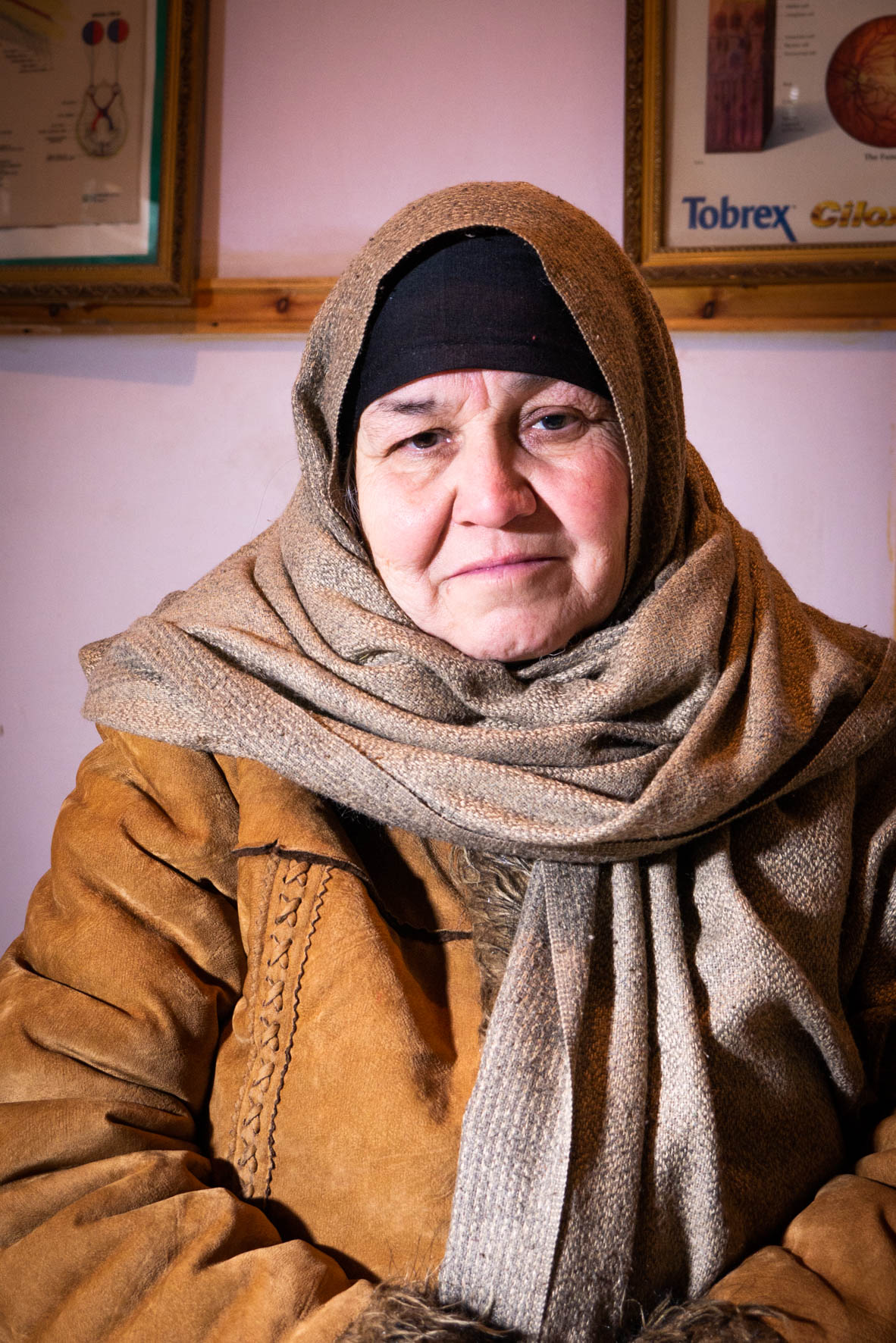“Poor people and wealthy people are treated equally. That’s why I came here.”
Hundreds of people are being saved from irreversible blindness thanks to a new treatment the International Assistance Mission (IAM) has brought to the public health sector in Afghanistan.
“If I didn’t come here, I think I would have lost all my vision,” says 70-year-old Zamon*. He came to IAM’s Mazar Ophthalmic Centre (MOC) after going almost completely blind in his right eye, and losing much of the vision in his left. He was told by another clinic that he had cataracts and to come to MOC for surgery; but when he arrived, our doctors saw that he didn’t have cataracts at all, but diabetic retinopathy.

Zamon, an old man who was suffering from retinal vascular disease before coming to MOC.
Before 2018, most eye specialists in Afghanistan were unable to diagnose and treat retinal vascular diseases like Zamon’s. These diseases occur when the blood vessels that nourish the retina get blocked, causing the growth of abnormal blood vessels in the back of the eye that often leak, resulting in a loss of vision. Until recently, people experiencing these disorders (often those with diabetes or high blood pressure) had to repeatedly travel abroad for treatment, or find a private clinic in Afghanistan that could do the procedure. If they couldn’t afford it, they faced irreversible blindness.
Now, IAM’s National Organisation for Ophthalmic Rehabilitation (NOOR) is offering this sight-saving treatment in Kabul and Mazar for a fraction of the cost. That means that far more people in Afghanistan have access to a service that can stop them from going permanently blind.
Nilofar’s* grandson accidently hit her in the eye, causing it to bleed. After suffering with a headache for a few days, she travelled to MOC to get help. The team checked her eye and realised there was a bigger problem. Using their new Optical Coherence Tomography (OCT) machine – that captures images of the back of the eye – they could see that she was suffering from a retinal vascular disease.

“Poor people and wealthy people are treated equally. That’s why I came here,” these are the words of Nilfoar.
IAM doctors are now able to treat these diseases using a series of injections over a period of six months or so. They inject Avastin – a medicine that was originally used to treat cancer – into the back of the eye and it blocks the growth of abnormal vessels.
“This is the third time I am going to receive the injection,” says Nilofar, who has just had her monthly check-up. “After getting the other injections, the [blood clot] in the back of my eye is reducing. I believe after two more months it will vanish completely!”
The images of the back of Nilofar and Zamon’s eyes before and after their first series of injections show a huge improvement. Sadly for Zamon, it was too late for the doctors to do anything about his right eye. If he’d left it much longer, the damage to his left eye would have been unstoppable, too.
“If I lost my sight, it would be very difficult for me and my family,” says Zamon, who is onto his seventh round of injections. At 70 years old, he is still the primary breadwinner for his family, working as a farmer to pay for his children to get through university. Even at the low price MOC is charging for the injections, it is a big stretch for him to afford them. Without IAM, Zamon could never have paid for the treatment he needed to save his eye.
“Poor people and wealthy people are treated equally. That’s why I came here,” says Nilofar. “[MOC] has very intelligent doctors and it is well-known for its good service. I am thankful to the doctors who treated me very well. And I am happy.”
In 2019, IAM hospitals in Kabul and Mazar gave 1,631 Avastin injections, helping hundreds of people to keep their sight. The new diagnostic tool we have through OCT machines and our doctors’ new skill in giving Avastin injections means that we are one step closer towards our goal of ending preventable blindness in Afghanistan.
And, as word of this new treatment spreads, we hope to save the eyesight of many more patients in 2020.
*names changed